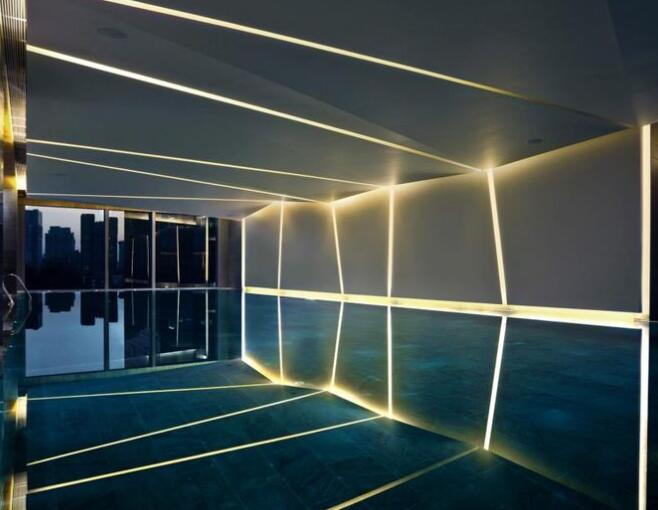With the continuous development of LED technology, swimming pool lighting has become increasingly attractive and interesting. Because LED light source rich color temperature, RGB and even RGBW flexible control, coupled with its energy saving, long maintenance cycle, LED pool lights are now popular.

So for today’s swimming pool lighting, when in the lighting design, what lighting options should be considered?
Here we come to explore a few points:
First, the surface material of the lamp
The surface material of the fixture must be 1.4571 stainless steel. For even higher salinity or warm salt water, we even need 1.4539 alloy steel, the surface of the polished will be more anti-corrosion treatment. In fact, it is different from what we generally think, stainless steel will be also rust and discoloration, especially when the surface is not handled properly. The fixture’s mounting pieces and other parts such as wire connectors are also the same as the need for proper stainless steel.
Second, the structure of the lamp
For the lighting structure, it is necessary to be able to do the lamp connection proof water, and when the wire breakage it can still cut off the water into the lamp. The gasket between the glass and the lamp body must be resistant aging silicone material. LED electronic screen also need to use conformal coating protection.
Third, the embedded parts of the lamp shell
The embedded part of the fixture should has a flexible pipe connected to the pool, and the connection of the wire and the pipeline is waterproof. If there is no waterproof connection between the wire and the pipeline, even if when the pipeline is above the water pipe may still cause siphon phenomenon.
Fourth, the luminous flux of light choice
The choice of luminous flux for swimming pool lamps depends on the brightness of the ambient light and the size of the swimming pool. The higher the color temperature of the cold white light absorption in the water is lower than the warm white. This is because the light in the water after a meter of blue light is absorbed 5%, green light 3%, while the red is 16%.
So the use of cold white LED lights has two advantages: higher LED light efficiency and lower water absorption rate.
The use of the wire must be a special underwater wire, which can match with the copper core diameter pointed by manufacturers. If the lamp does not have a wire (in order to have a more flexible wire length), be sure to follow the manufacturer’s recommendations to seal the connection. The same requirements are required for the splitter system and the watertight sealed sub-line system. The ideal situation is that the connection of the wire and the lamp is done at the lamp factory, which requires the length of the wire to be determined when the lamp is placed. For the values ??listed above, you want the lighting effect in water to be more noticeable. It is recommended that the illumination of the pool environment be kept below 100 lx. For a rectangular swimming pool, if you want more uniform illumination, the lamp is recommended to be installed on both sides of the long side, 90 degrees beam angle, the lamp interval is about half the width of the pool.
Swimming pool maintenance often needs to reduce the water level or empty the water of pool, but the end user needs to note that many high-power LED lamps need water to help cool.
All in all, the design of a satisfactory pool of light has very high requirements of the lamp. It requires that it should match well with good lamp quality, luminous flux, size, color, color temperature, beam angle and so on.
